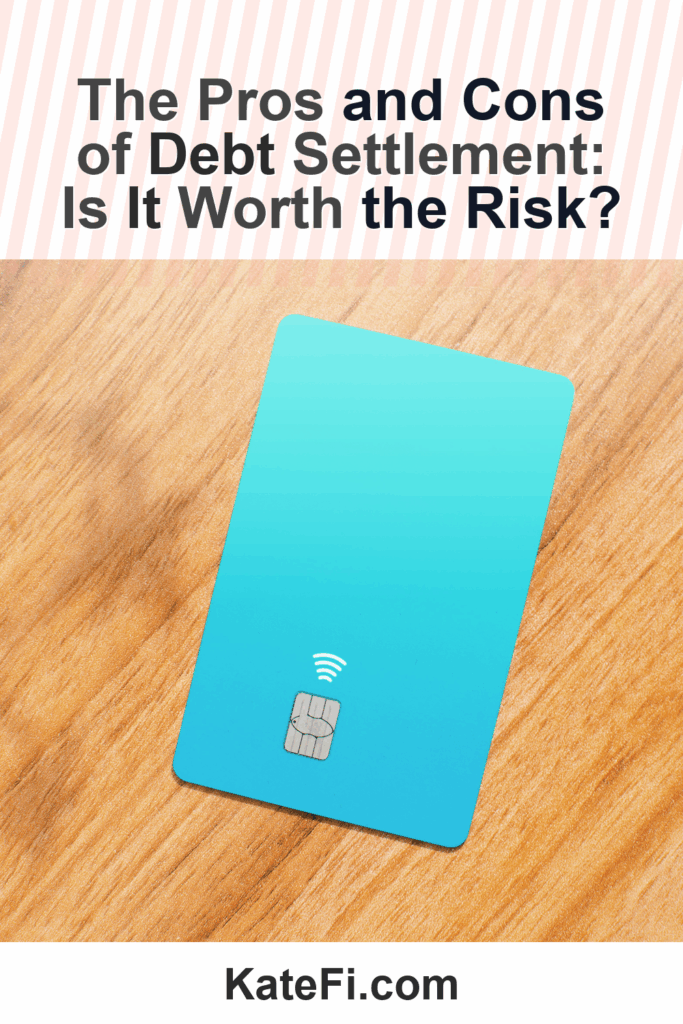7 Proven Steps to Reduce Debt by 50% in Just 6 Months: Here’s How!
Debt can feel like a heavy anchor, holding you back from your financial freedom. However, with the right strategies, you can cut your debt in half within just six months. In this guide, we’ll explore seven proven steps that focus on creating budget resets that actually stick, negotiation tactics, and the importance of building an emergency buffer. Ready to start your journey to financial liberation? Let’s dive in!
Love our content? Show your support by following us — pretty please!🥺
FOLLOW ON PINTEREST
Hi! I’m Kate, the face behind KateFi.com—a blog all about making life easier and more affordable.
Step 1: Assess Your Current Financial Situation
👉 Start Your Free Debt Relief Review
Not available in IL, KS, OR, TN, UT, WV.
Before you can take actionable steps to reduce your debt, you need to know exactly where you stand. Gather all your financial documents: bank statements, credit card bills, loans, and any other debt-related paperwork. This initial assessment will serve as your baseline.
Checklist for Financial Assessment:
- Gather the latest credit card statements.
- Compile loan documents (auto, personal, etc.).
- List monthly income sources.
- Note any recurring expenses.
Once you have a clear view of your finances, you can identify which debts are the most burdensome and prioritize them accordingly. If you’re feeling overwhelmed, consider getting a free consultation to review your options. A professional can help you strategize based on your unique financial situation.
Step 2: Create a Realistic Budget
What You’ll Learn on the Call
- Estimated timeline and monthly payment range
- How credit may be affected in the short term
- What documents to gather to move faster
Not available in IL, KS, OR, TN, UT, WV.
After assessing your situation, it’s time to create a budget. A well-structured budget acts as a roadmap to guide your spending and saving habits. Here’s a simple structure you can follow:
- Track Your Income: Write down all sources of income.
- List Essential Expenses: Include rent/mortgage, utilities, groceries, and minimum debt payments.
- Allocate for Savings and Emergency Funds: Even a small monthly allocation can make a difference.
- Discretionary Spending: Identify areas where you can cut back.
Example Budget Table:
| Category | Monthly Amount | Notes |
|---|---|---|
| Total Income | $3,500 | |
| Essential Expenses | $2,200 | (Rent, Utilities, etc.) |
| Minimum Debt Payments | $800 | (Credit Cards, Loans) |
| Savings | $300 | (Emergency Fund) |
| Discretionary Spending | $200 | (Dining, Entertainment) |
Be sure to revisit your budget regularly. Life changes, and your budget should reflect those changes too!
✅ See If You Qualify for Debt Relief
Step 3: Negotiate Your Debts
Understand pros/cons of settlement vs consolidation vs DMP for your exact mix of debts.
Not available in IL, KS, OR, TN, UT, WV.
Did you know that many creditors are open to negotiation? You might be surprised by what you can achieve just by reaching out. Here are some negotiation tactics to consider:
- Contact Your Creditors: Call and explain your situation. Be polite and straightforward.
- Ask for Lower Interest Rates: Even a 1% reduction can save you money.
- Inquire About Hardship Programs: Many companies have programs designed for those experiencing financial difficulty.
- Offer to Settle: If you have a lump sum available, you may be able to negotiate a reduced settlement.
Sample Script for Negotiation:
“Hi, my name is [Your Name], and I’m calling regarding my account #[Account Number]. Due to [your reason—job loss, medical expenses, etc.], I’m facing some financial challenges. I would like to discuss possible options that can help me manage my debt more effectively.”
This approach not only demonstrates your willingness to resolve your debts but also opens the door for solutions that could ease your financial burden.
Step 4: Build an Emergency Fund
An emergency fund acts as a safety net, preventing unexpected expenses from derailing your budget. Aim to save at least three months’ worth of expenses. Here’s how to start:
- Automate Savings: Set up a direct deposit into a separate savings account.
- Cut Unnecessary Expenses: Identify areas to trim and redirect those funds.
- Start Small: Even $25 a month can add up over time.
Building an emergency fund will give you peace of mind and protect you from taking on additional debt in case of unforeseen expenses. If you’re struggling to make savings work, consider reaching out for a free consultation.
✅ See If You Qualify for Debt Relief
Step 5: Use the Snowball or Avalanche Method
To pay off debt effectively, consider using either the Snowball or Avalanche method:
- Snowball Method: Focus on paying off the smallest debts first, which can provide a motivational boost.
- Avalanche Method: Target debts with the highest interest rates to save on interest payments over time.
Both methods have their merits, and it ultimately depends on what motivates you more. Review your debts and choose a method that resonates with your financial psychology.
Step 6: Monitor Your Credit Impact
While you’re making strides to reduce your debt, keep an eye on your credit score. Understanding how your actions affect your credit is crucial. Note that debt relief efforts can impact your score temporarily, but responsible management can lead to long-term improvements.
Documents to Gather for Faster Credit Review:
- Recent credit report
- Pay stubs or income documentation
- Current debt statements
It’s important to stay proactive. Regularly checking your credit report can alert you to any discrepancies or issues that need to be addressed.
Step 7: Stay Committed and Seek Support
Finally, reducing debt requires commitment. Surround yourself with a supportive network, whether it’s friends, family, or support groups. Sharing your goals can foster accountability and provide encouragement.
Accountability Checklist:
- Share your financial goals with a trusted friend.
- Join a budgeting group or online forum.
- Track your progress monthly and celebrate small victories!
Building a sustainable, long-term plan is essential for achieving and maintaining financial stability.
✅ See If You Qualify for Debt Relief
Important: This content is for education only—not legal, tax, or financial advice. Results and eligible programs vary by situation and state. Fees apply if you enroll and complete a program. Debt relief can affect credit; missed payments may lead to collections/lawsuits. Not available in IL, KS, OR, TN, UT, WV.
Reducing debt doesn’t have to be an overwhelming journey. By taking these seven proven steps, you can make significant progress and potentially cut your debt in half within six months. Whether it’s through diligent budgeting, effective negotiation, or building a supportive network, the power to change your financial situation lies in your hands.
If you’re ready to take the next step, get a free consultation to explore your options and embark on your path to financial freedom!






















